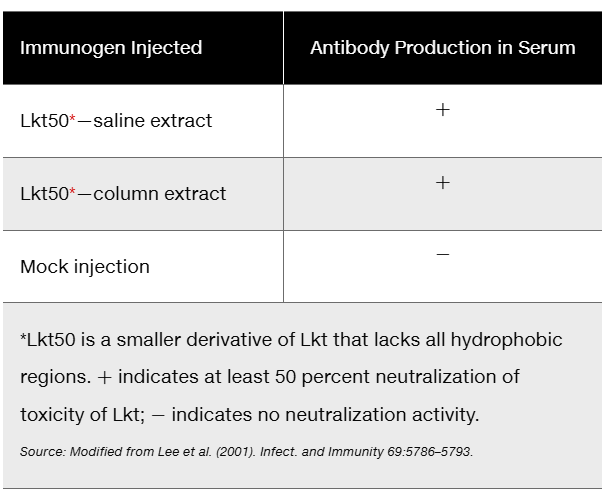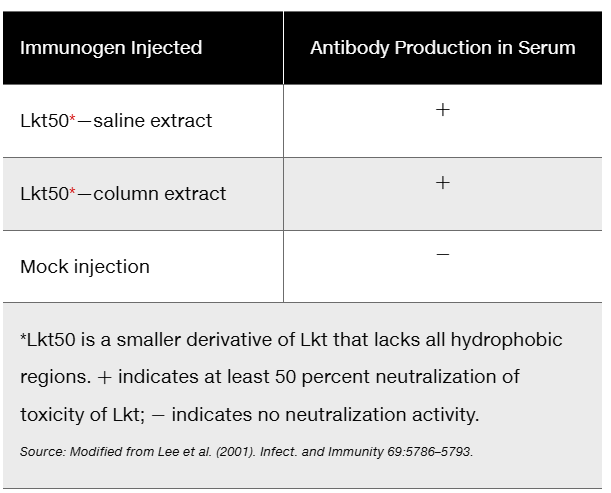 Back
BackProblem 1a
What experimental evidence confirms that we have introduced a useful gene into a transgenic organism and that it performs as we anticipate?
Problem 1b
How does a positive ASO test for sickle-cell anemia determine that an individual is homozygous recessive for the mutation that causes sickle-cell anemia?
Problem 1c
From microarray analysis, how do we know what genes are being expressed in a specific tissue?
Problem 1d
How can we correlate the genome with RNA expression data in a tissue or a single cell?
Problem 1e
From GWAS, how do we know which genes are associated with a particular genetic disorder?
Problem 2
Write a short essay that summarizes the impacts that genomic applications are having on society and discuss which of the ethical issues presented by these applications is the most daunting to society.
Problem 3
Why are most recombinant human proteins produced in animal or plant hosts instead of bacterial host cells?
Problem 4a
One of the major causes of sickness, death, and economic loss in the cattle industry is Mannheimia haemolytica, which causes bovine pasteurellosis, or shipping fever. Noninvasive delivery of a vaccine using transgenic plants expressing immunogens would reduce labor costs and trauma to livestock. An early step toward developing an edible vaccine is to determine whether an injected version of an antigen (usually a derivative of the pathogen) is capable of stimulating the development of antibodies in a test organism. The following table assesses the ability of a transgenic portion of a toxin (Lkt) of M. haemolytica to stimulate development of specific antibodies in rabbits.
What general conclusion can you draw from the data?
Problem 4b
One of the major causes of sickness, death, and economic loss in the cattle industry is Mannheimia haemolytica, which causes bovine pasteurellosis, or shipping fever. Noninvasive delivery of a vaccine using transgenic plants expressing immunogens would reduce labor costs and trauma to livestock. An early step toward developing an edible vaccine is to determine whether an injected version of an antigen (usually a derivative of the pathogen) is capable of stimulating the development of antibodies in a test organism. The following table assesses the ability of a transgenic portion of a toxin (Lkt) of M. haemolytica to stimulate development of specific antibodies in rabbits.
With regards to development of a usable edible vaccine, what work remains to be done?
Problem 5
Sequencing the human genome, the development of microarray technology, and personal genomics promise to improve our understanding of normal and abnormal cell behavior. How are these approaches dramatically changing our understanding and treatment of complex diseases such as cancer?
Problem 6
A couple with European ancestry seeks genetic counseling before having children because of a history of cystic fibrosis (CF) in the husband's family. ASO testing for CF reveals that the husband is heterozygous for the Δ508 mutation and that the wife is heterozygous for the R117 mutation. You are the couple's genetic counselor. When consulting with you, they express their conviction that they are not at risk for having an affected child because they each carry different mutations and cannot have a child who is homozygous for either mutation. What would you say to them?
Problem 7
As genetic testing becomes widespread, medical records will contain the results of such testing. Who should have access to this information? Should employers, potential employers, or insurance companies be allowed to have this information? Would you favor or oppose having the government establish and maintain a central database containing the results of individuals' genome scans?
Problem 8
Might it make sense someday to sequence every newborn's genome at the time of birth? What are the potential advantages and concerns of this approach?
Problem 9a
Which of the examples of genetic testing below are prognostic tests? Which are diagnostic?
Individual sequencing (personal genomics) identifies a mutation associated with Alzheimer's disease.
Problem 9b
Which of the examples of genetic testing below are prognostic tests? Which are diagnostic?
ASO testing determines that an individual is a carrier for the mutant β-globin allele (βˢ) found in sickle-cell anemia.
Problem 9c
Which of the examples of genetic testing below are prognostic tests? Which are diagnostic?
DNA sequencing of a breast tumor reveals mutations in the BRCA1 gene.
Problem 9d
Which of the examples of genetic testing below are prognostic tests? Which are diagnostic?
Genetic testing in a healthy teenager identifies an SNP correlated with autism.
Problem 9e
Which of the examples of genetic testing below are prognostic tests? Which are diagnostic?
An adult diagnosed with Asperger syndrome (AS) has a genetic test that reveals an SNP in the GABRB3 gene that is significantly more common in people with AS than the general population.
Problem 10
Does genetic analysis by ASO testing allow for detection of epigenetic changes that may contribute to a genetic disorder? Explain your answer.
Problem 11
Maternal blood tests for three pregnant women revealed they would be having boys, yet subsequent ultrasound images showed all three were pregnant with girls. In each case Y chromosome sequences in each mother's blood originated from transplanted organs they had received from men! This demonstrates one dramatic example of a limitation of genetic analysis of maternal blood samples. What kind of information could have been collected from each mother in advance of these tests to better inform physicians prior to performing each test?
Problem 12
What is the main purpose of genome-wide association studies (GWAS)? How can information from GWAS be used to inform scientists and physicians about genetic diseases?
Problem 13
Describe how the team from the J. Craig Venter Institute created a synthetic genome. How did the team demonstrate that the genome converted the recipient strain of bacteria into a different strain?
Problem 14
Consider ethical issues associated with creating a synthetic human genome. Are there specific applications for a synthetic human genome that you support? Is creating a synthetic genome enhanced with genes for certain kinds of traits one of those applications?
Problem 15
The family of a sixth-grade boy in Palo Alto, California, was informed by school administrators that he would have to transfer out of his middle school because they believed his mutation of the CFTR gene, which does not produce any symptoms associated with cystic fibrosis, posed a risk to other students at the school who have cystic fibrosis. After missing 11 days of school, a settlement was reached to have the boy return to school. What ethical problems might you associate with this example?
Problem 16
Dominant mutations can be categorized according to whether they increase or decrease the overall activity of a gene or gene product. Although a loss-of-function mutation (a mutation that inactivates the gene product) is usually recessive, for some genes, one dose of the normal gene product, encoded by the normal allele, is not sufficient to produce a normal phenotype. In this case, a loss-of-function mutation in the gene will be dominant, and the gene is said to be haploinsufficient. A second category of dominant mutation is the gain-of-function mutation, which results in a new activity or increased activity or expression of a gene or gene product. The gene therapy technique currently being used in clinical trials involves the 'addition' to somatic cells of a normal copy of a gene. In other words, a normal copy of the gene is inserted into the genome of the mutant somatic cell, but the mutated copy of the gene is not removed or replaced. Will this strategy work for either of the two aforementioned types of dominant mutations?
Problem 17
In 2013 the actress Angelina Jolie elected to have prophylactic double-mastectomy surgery to prevent breast cancer based on a positive test for mutation of the BRCA1 gene. What are some potential positive and negative consequences of this high-profile example of acting on the results of a genetic test?
Problem 18
The National Institutes of Health created the Genetic Testing Registry (GTR) to increase transparency by publicly sharing information about the utility of their tests, research for the general public, patients, health-care workers, genetic counselors, insurance companies, and others. The Registry is intended to provide better information to patients, but companies involved in genetic testing are not required to participate. Should company participation be mandatory? Why or why not? Explain your answers.
Problem 19
Should the FDA regulate direct-to-consumer genetic tests, or should these tests be available as a 'buyer beware' product?
Problem 20
Would you have your genome sequenced, if the price was affordable? Why or why not? If you answered yes, would you make your genome sequence publicly available? How might such information be misused?
Problem 21
Following the tragic shooting of 20 children at a school in Newtown, Connecticut, in 2012, Connecticut's state medical examiner requested a full genetic analysis of the killer's genome. What do you think investigators might be looking for? What might they expect to find? Might this analysis lead to an oversimplified analysis of the cause of the tragedy?


